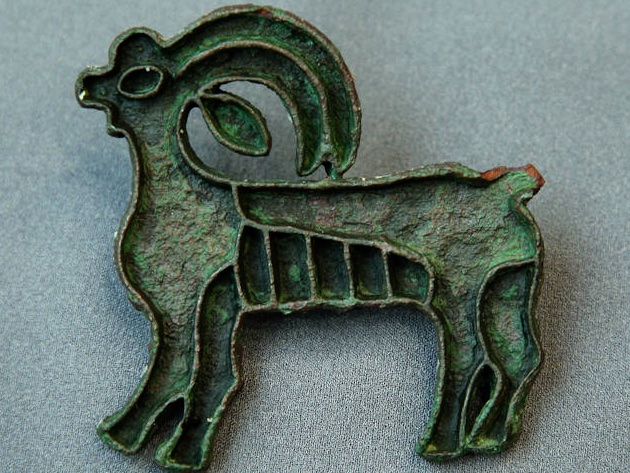
The major international archaeological exhibition Antiche civiltà del Turkmenistan (Ancient Civilizations of Turkmenistan), hosted in the halls of the Palazzo dei Conservatori at the Capitoline Museums, presents for the first time a rich collection of works from protohistoric Margiana (3rd-2nd millennium BC), in southeastern Turkmenistan, and from ancient Parthia, in particular from the site of Nisa (2nd century BC – 1st century AD) in central-southern Turkmenistan.
A crossroads of ancient civilizations, Turkmenistan is a country rich in history and archaeology, among the most expressive and richly stratified in Central Asia. Thanks to its strategic location between Mesopotamia, the Iranian plateau, and the Indus Valley, Turkmenistan has been a crucial hub along the main trade routes connecting East and West since the 3rd-2nd millennium BC. These exchanges involved not only the transport of prestigious goods, but also the circulation of ideas and technical knowledge.
The exhibition therefore offers visitors a unique opportunity to admire some precious masterpieces never before exhibited outside of Turkmenistan, such as the gold and semi-precious stone necklaces from Gonur-tepe (3rd-2nd millennium BC), the unbaked clay heads, portraits of rulers and warriors, and the richly decorated ivory rhyta (drinking and pouring vessels) from the Hellenistic period (2nd century BC - 1st century AD).
Margiana was, in fact, at the centre of the cultural complex of the Greater Khorasan Civilization, which encompassed the whole of Central Asia and neighboring regions during the Bronze Age. During this period, a refined and extraordinary material culture developed, one of the highest expressions of this civilization, characterized by a common political, economic, social, and cultural substratum.
The exhibition also retraces another important chapter in ancient Turkmen history: that of the Kingdom that later became the Parthian Empire (or Arsacid Empire, after their founder). The masterpieces on display here come from Nisa-Mithradatkert, a monumental urban centre of the Arsacid rulers, founded to celebrate the national glories of a vast empire, stretching from the Euphrates to Bactria; one of the longest-lived empires of antiquity, it would for centuries be able to confront the Roman Empire on its western border.
Promoted by Rome Capital, the Department of Culture, the Capitoline Superintendency for Cultural Heritage, and the Ministry of Foreign Affairs and International Cooperation, the exhibition is organized in collaboration with the Ministry of Culture of Turkmenistan, ISMEO - International Association for Mediterranean and Oriental Studies, CRAST (Turin Archaeological Research and Excavation Center for the Middle East and Asia), and the University of Turin. Curated by Claudio Parisi Presicce, Barbara Cerasetti, Carlo Lippolis, and Mukhametdurdy Mamedov. Organized by Zètema Progetto Cultura.
Photo: Compartment seal, 3rd-2nd millennium BC, State Museum of the State Cultural Centre of Turkmenistan
Informations
Dal 25 ottobre 2025 al 12 aprile 2026
Tutti i giorni ore 9.30-19.30
24 e 31 dicembre ore 9.30-14.00
Ultimo ingresso un'ora prima della chiusura
Giorni di chiusura: 1 maggio e 25 dicembre
CONSULTA SEMPRE LA PAGINA AVVISI prima di programmare la tua visita al museo.
 Condividi
Condividi











































